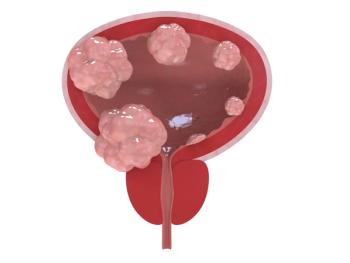
Oncology NEWS International
- Oncology NEWS International Vol 8 No 1
- Volume 8
- Issue 1
Transplant Center Uses Cooperative Care Model
OMAHA, Nebraska-The Lied Transplant Center, located on the University of Nebraska Medical Center campus, recently had its grand opening and is expected to begin admitting patients this month for solid organ or bone marrow transplants. Its 14 levels include clinics and treatment rooms, 44 cooperative care suites, 44 Nebraska House guest suites, and four floors devoted to research. The Center takes its name from the Lied Foundation Trust, which donated $15 million toward construction.
OMAHA, NebraskaThe Lied Transplant Center, located on the University of Nebraska Medical Center campus, recently had its grand opening and is expected to begin admitting patients this month for solid organ or bone marrow transplants. Its 14 levels include clinics and treatment rooms, 44 cooperative care suites, 44 Nebraska House guest suites, and four floors devoted to research. The Center takes its name from the Lied Foundation Trust, which donated $15 million toward construction.
The Center has adopted the cooperative care model in which a patients caregiver (friend, spouse, parent, or relative) stays with the patient and provides basic care during treatment and recovery. Care partners assist with daily activities, monitor and assist with self-medication, and escort the patient to and from treatments. The center is said to be the first in the country to combine cooperative care, research, and education.
Articles in this issue
almost 27 years ago
Pittsburgh to Build New Cancer Centeralmost 27 years ago
NCI Initiates Two High-Priority Tobacco Research Programsalmost 27 years ago
Breast Cancer Stamp Sells Wellalmost 27 years ago
Hospital Strategies To Prevent Invasive Aspergillosis Spreadalmost 27 years ago
‘Cancer Patients Should Be Assertive, Know Their Rights’almost 27 years ago
EBCTCG Update of Adjuvant Treatment for Early Breast Canceralmost 27 years ago
Younger Breast Cancer Patients at Increased Risk of Recurrencealmost 27 years ago
Six Named to National Cancer Advisory Boardalmost 27 years ago
Trial Uses Vitamin A To Prevent Lung Cancer in Former Smokersalmost 27 years ago
‘Medical School Curriculum Must Include Palliative Care’Newsletter
Stay up to date on recent advances in the multidisciplinary approach to cancer.
















































































